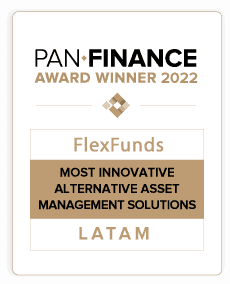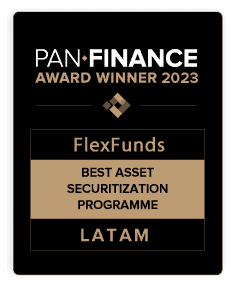With the arrival of the new year, asset managers, investors, and other actors point to multiple options in the market to overcome the challenges that arise in 2023, which will probably continue to be marked by the volatility of the stock markets and the shadow of a recession that could impact returns on many financial instruments.
Structured notes are a type of hybrid financial instrument since they combine a series of characteristics of fixed-income and equity products, thus adjusting to different profiles and allowing higher returns than traditional ones. But what are its key advantages, and what are the main aspects to consider?
This financial instrument is utilized to obtain above-average results thanks to the combination of elements of both fixed and variable income-generating securities. Its customization capacity is geared to work with each investor’s risk profile.
It is also noteworthy that they are structured as titles or notes issued by a financial institution for a fixed term, generally with a minimum of one year, according to the conditions of each institution.
Structured notes, which have a bond and derivative component, are issued by financial institutions and then sold by intermediaries to individual investors seeking to grow their wealth, according to the US Securities and Exchange Commission (SEC).
Since these instruments are tied to a given basket of underlying assets, holders earn returns based on the performance of these assets in the market.
The assets linked to these structured notes can be of different kinds. They can be structured based on a stock index, exchange rate, corporate debt, or raw materials, among others.
According to a report by The Wall Street Journal, some US$73 billion in structured notes had been issued in the US as of November of last year, getting very close to the record of US$100 billion in 2021.
This performance has been influenced, in part, by a focus on protecting investors’ capital at a time when interest rates in the US remain strong. However, the Federal Reserve (Fed) has begun to slow down the rise as inflation subsides, and in December, it placed them between 4.25% and 4.5%.
What advantages does this instrument have, and what aspects should be considered?
One of the main advantages of structured notes is that they allow investors to have indirect exposure to more financial products and markets that they would not have access to under other circumstances, either due to geographical limitations or other types of certifications necessary to start generating returns from different types of assets.
At the same time, structured notes are considered a flexible instrument in their ability to adapt to different market scenarios, achieving returns in bullish and bearish contexts.
In addition, these notes are structured according to the risk profile of each investor and are adjusted to the time horizon they define to meet their investment objectives.
And because they’re customizable, investors can set key elements like terms, the basket of underlying assets to track, rates, protection percentages, and other relevant conditions.
Likewise, investors should consider that with this instrument, their capital could be shielded since there are fixed-income components in its structuring that protect the capital if the bets placed do not turn out as expected.
On the side of the aspects to consider about this instrument, it is essential to take into account that they have a high degree of complexity and risk; therefore, investors are required to know fundamental aspects of how the payment structure works and the associated fees, among others.
According to the SEC Investor Bulletin, other relevant aspects of this instrument have to do with liquidity since the “ability to trade or sell structured notes in a secondary market is often very limited.”
Additionally, it refers to other important decision-making elements that range from tax aspects, given that their treatment is considered complex, to specific issues, such as the market risk associated with a structured note and the issue price, among others.
Taking these variables into account, and based on the fact that it is an exciting alternative as it adjusts to the profile of each investor and that it is possible to obtain higher returns than fixed-income instruments, structured notes have gained popularity among investors at a time when volatility impacts the stock markets and strategies focus more on preserving the value of capital without assuming as many risks in the face of a global recession.
The keys, as in any investment, should focus on understanding the instrument very well before entering into it and seeking advice from a financial, legal, and tax point of view to fully comply with all the responsibilities that arise from a structured note as a non-traditional alternative, and above all, taking advantage of all the benefits they can offer in situations like the current ones.
Sources:
- https://www.sec.gov/oiea/investor-alerts-bulletins/ib_structurednotes
- https://www.wsj.com/livecoverage/stock-market-news-today-11-14-2022/card/the-market-for-structured-notes-is-booming-BFvwL6Gddbuk3PKWaluk







